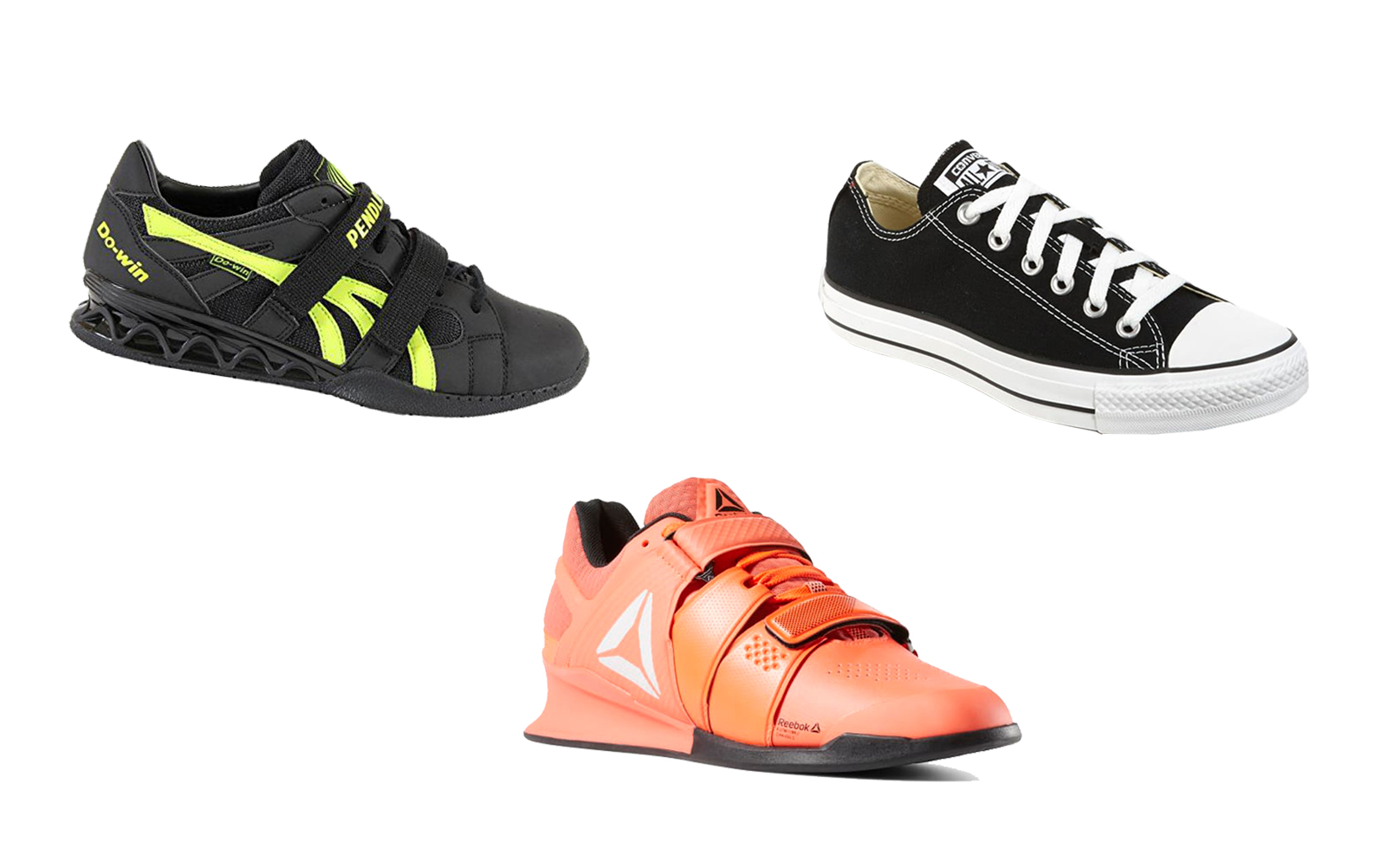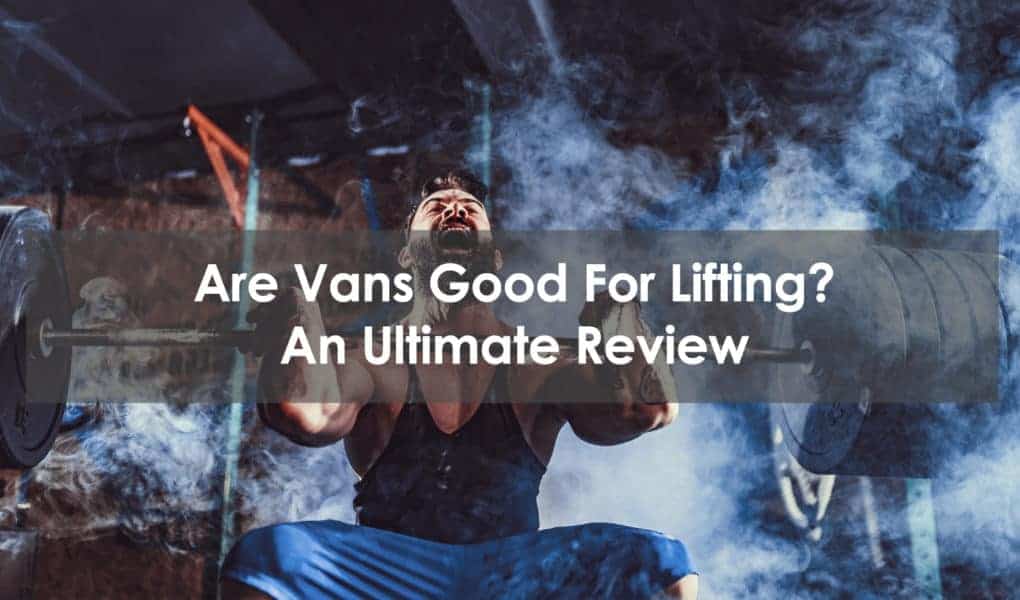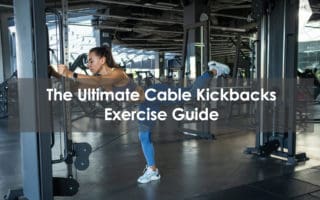You may not realize it, but the pair of shoes you wear while lifting – and just working out in general – is a very important choice. Sure, you might have a pair of trainers that provide breathability and sufficient support and you may even use these for all your workouts, but your go-to gym shoe is unlikely to be suitable for heavy weight training.
In recent years there’s been a trend of more and more people wearing a rather surprising pair of shoes for lifting; Vans. Yes, the popular sneakers – initially designed for skaters – have become a popular choice as weightlifting shoes.
Here, we’ll look at the benefits and drawbacks of wearing Vans for lifting, as well as casting an eye on other alternatives you could consider, no matter the level of the lifter.
Why use Vans when lifting?
1. Flat sole
If you asked anyone who uses Vans for lifting to give the one main reason for doing so, chances are they would say it’s because of the flat sole. Vans are designed in such a way that their sole is essentially a flat surface; there’s no dip in between the heel and toes, which you could commonly find in running and gym shoes.
That dip is designed to aid in the bending of feet during movements like running or agility training, and also helps provide sufficient support when completing exercises that require the movement of your feet.
However, when it comes to lifting, a flatter sole is preferred. This is the case for casual lifters and competitive lifters alike because you want your feet to be in as natural a position as possible.
Regular gym shoes or running shoes, with that dip in the sole, change the position of your feet to make them slightly more arched. While this might not seem like a big deal, it can actually have a significant impact on the way your entire body works during lifts.
With a flat sole, Vans become great shoes for lifting because they don’t affect your posture and they get your feet as close to and level with the floor as possible without taking your shoes off entirely. This is the goal when lifting; to have your feet on a strong, solid platform.
Having your feet in this more natural position provides more stability and balance, which will lead to improvements in performance and allow you to perform a deeper squat or heavier squat, for example. This is because, when squatting, you want the surface you’re on to be as flat as possible in order to effectively push off.
2. Firm soles
Vans also have firm soles, which help keep your foot lateral against the floor when lifting. Vans tend to have harder soles than other types of shoes, like athletic shoes and obviously more casual shoes, meaning they can withstand more pressure and provide that solid base you need when performing complex movements like squats and deadlifts. Vans really aren’t just your everyday shoe.
3. Durable
Having durable soles, as Vans do, also means they’ll last longer, making them a smart investment in the first place. Vans are relatively affordable shoes, especially in comparison to dedicated lifting shoes, making them an ideal choice for the average lifter.
Specialized lifting shoes usually cost north of $100, whereas you can get a decent pair of Vans for half that price. Taking that into consideration, the choice is a no-brainer, especially if you are only a casual lifter and don’t require the professional level of quality that comes with dedicated lifting shoes.
There are numerous different styles of Vans but, by and large, they will all have similar soles that feature the patented waffle design. This isn’t just for show as this makes Vans non-slip and so helps you to gain a firm standing and solid base when performing lifts.
Vans are made from high-quality canvas and, despite not being designed for exercise, actually offer a lot of breathability for your feet. This is important because let’s face it, you’re going to sweat while lifting, so wearing canvas shoes that help combat this is a huge plus from a comfort standpoint.
4. Aesthetics
Plus, there are the aesthetics to consider. While this might not be of interest to some, Vans are fashionable shoes that look good and this is undoubtedly part of their attraction for people who wear them while lifting. They have a variety of styles, from low cut to high tops, and they can give you that added confidence boost you sometimes need to hit your lifting goals.
When should I not use Vans for exercise?
1. For professional performance
All that being said, Vans aren’t always the smart choice for lifting. They are not specialized lifting shoes, so their benefits are only going to go so far. While they’re great for anything between beginner lifters and regular lifters, Vans are not going to work as well for those who require professional performance.
Power athletes, weightlifters, and other professional athletes will be lifting heavier and more regularly, and so their requirements for shoes are different; in other words, they will need specialized lifting shoes.
Though they have firm soles and other benefits, Vans are just not up to scratch when you need to reach peak lifting performance. Specialized lifting shoes are specifically designed to aid in weightlifting, providing not only firm soles but also flexibility, breathability, maximum comfort, and sturdiness.
Dedicated lifting shoes are expensive, but if you’re serious about lifting professionally then they are a worthwhile investment.
2. When performing lifts that require flexibility
Lots of lifters, however, will be doing so more casually and so won’t have as much need for actual weightlifting shoes. That doesn’t mean Vans are all-star shoes suitable for every type of lift, though.
As mentioned, Vans have firm and solid soles that don’t have much flexibility. This makes them great for lifts in which your feet remain in one place, such as squats and deadlifts, but limits their value for more dynamic movements.
Lunges are a perfect example of a lift you shouldn’t wear Vans for because your feet need to be bent during the movement and Vans don’t facilitate this particularly well. The toes of your back foot bend when performing a lunge, and the front part of a pair of Vans is the most robust and inflexible.
So, not only would you be affecting your own form while performing lunges with Vans on, but you’d also be damaging the shoes themselves.
The same can be said for calf raises, which also require a bend in your toes. The range of motion is actually larger with this exercise as you’re bending your feet both ways, making Vans especially unsuitable for it.
3. When performing agility exercises
You should certainly avoid wearing Vans for agility exercises and movements that require explosivity from your feet and lower legs. Examples include box jumps, skater jumps, sprints, and more.
Firstly, the issue of flexibility – or lack thereof – in Vans is also relevant for these forms of exercise. Your feet will be constantly shifting position and orientation and would require a shoe that allows for that without impeding on performance. The sturdiness of Vans rules them out as a choice on that front.
4. When performing high impact exercises
Vans also don’t provide much cushioning or support, making high-impact activities like some of the ones noted above a no-go while wearing them. Gym shoes will have thicker, more absorbent soles to reduce the risk of injury when performing certain movements, while Vans do not.
You’ll also need shoes with sufficient ankle support while performing agility exercises or interval training. At a fast pace, your ankles will be under plenty of strain during this type of exercise and Vans do not have enough support in that area to minimize the risk of injury.
In reality, Vans are unsuitable for any form of cardio. Running, in particular, should never be done in Vans; there are countless running shoes in a range of prices that will aid performance and reduce injury risk.
Alternatives to Vans for Lifting

1. Converse
If you decide Vans aren’t quite the right choice for your lifting goals, then there are plenty of other options you can go for. The next logical choice would be Converse shoes, and many people would argue these are actually superior to Vans for lifting.
Converse share many of the same properties as Vans but are slightly better in many respects. They, too, have flat soles but in general, the Converse ones are more evenly flat across the entire foot.
Their soles are also thinner, which brings your foot closer to the ground and provides a sturdier base for you to work from when performing heavy lifts. Like Vans, Converse is pretty affordable and won’t break the bank to purchase, though they’re still high-quality and will last a long time if looked after properly.
2. Reebok
If you’re more serious about your lifting and are willing to spend more on the right shoes, then there are a number of brands and styles on offer. Reebok has a wide range of training shoes, and their Nano X1 Cross Trainer is an excellent option for lifting.
Though their soles are not as flat as those found on Vans, these trainers are specially designed to be adaptable for different kinds of training. With plenty of cushioning and lots of support, these can be used for heavy static lifts as well as dynamic exercises that keep you on the move.
Reebok also has dedicated weightlifting shoes as well, and some of their best are the Legacy Lifter II. These do have flat soles as well as offer ankle support and an impressive level of cushioning, without lifting your foot too far off the floor.
3. Do-Win
Do-Win, while being a lesser-known brand, produces some terrific lifting shoes, all of which have flat soles and sturdy bases.
You can also just wear your regular gym shoes though, as discussed above, these can impact performance and hinder your lifting progression. If your posture is slightly off – which is usually the case when lifting with, say, running shoes – then you won’t be able to lift quite as much and you won’t be able to achieve optimal form.
Final thoughts
Though they were never originally designed for it, Vans are actually very good shoes for lifting. Their flat, solid soles are ideal for positioning your feet correctly and preventing slippage while their canvas makeup means they’re lightweight and breathable.
However, they aren’t perfect weightlifting shoes. Vans are only really suitable for lifts like squats and deadlifts, where your feet stay flat in the same position and you’re pushing off the ground. More dynamic movements like lunges require more pliable shoes that allow your foot to bend more.
If you’re looking for affordable and effective lifting shoes to help you reach your goals – provided they aren’t at a professional level – then Vans is a smart choice.
Frequently Asked Questions
Can you squat more with lifting shoes?
No pair of shoes is going to immediately make you stronger, but they can help you improve your performance. Lifting shoes are designed for one purpose; weightlifting. The flat soles allow your feet to be as flat against the floor as possible, which helps you generate the force required to squat heavy amounts of weight.
You’re likely to find that your squat progression is more pronounced when using lifting shoes or flat-soled shoes like Vans in comparison to athletic or running shoes, which have a dip in the sole.
Is it OK to do squats barefoot?
The ideal situation is to squat or lift, barefoot as this has your feet directly on the ground and in their natural position. However, not all gyms will allow you to lift barefoot for hygienic reasons and, in fact, this will be the case in most establishments.
If you’ve got your own gym setup at home, then lifting barefoot is an excellent way to perfect your form and lift heavy. Of course, it’s also a matter of personal preference; some people would rather have the support of shoes while lifting.
Can Vans be workout shoes?
Vans are suitable for some forms of exercise, but not many. Static lifts like squats and deadlifts can be enhanced by wearing Vans, but plenty of other exercises require a different type of shoe.
So, in general terms, Vans cannot really be workout shoes, but rather alternative shoes you can change into for certain lifts.



